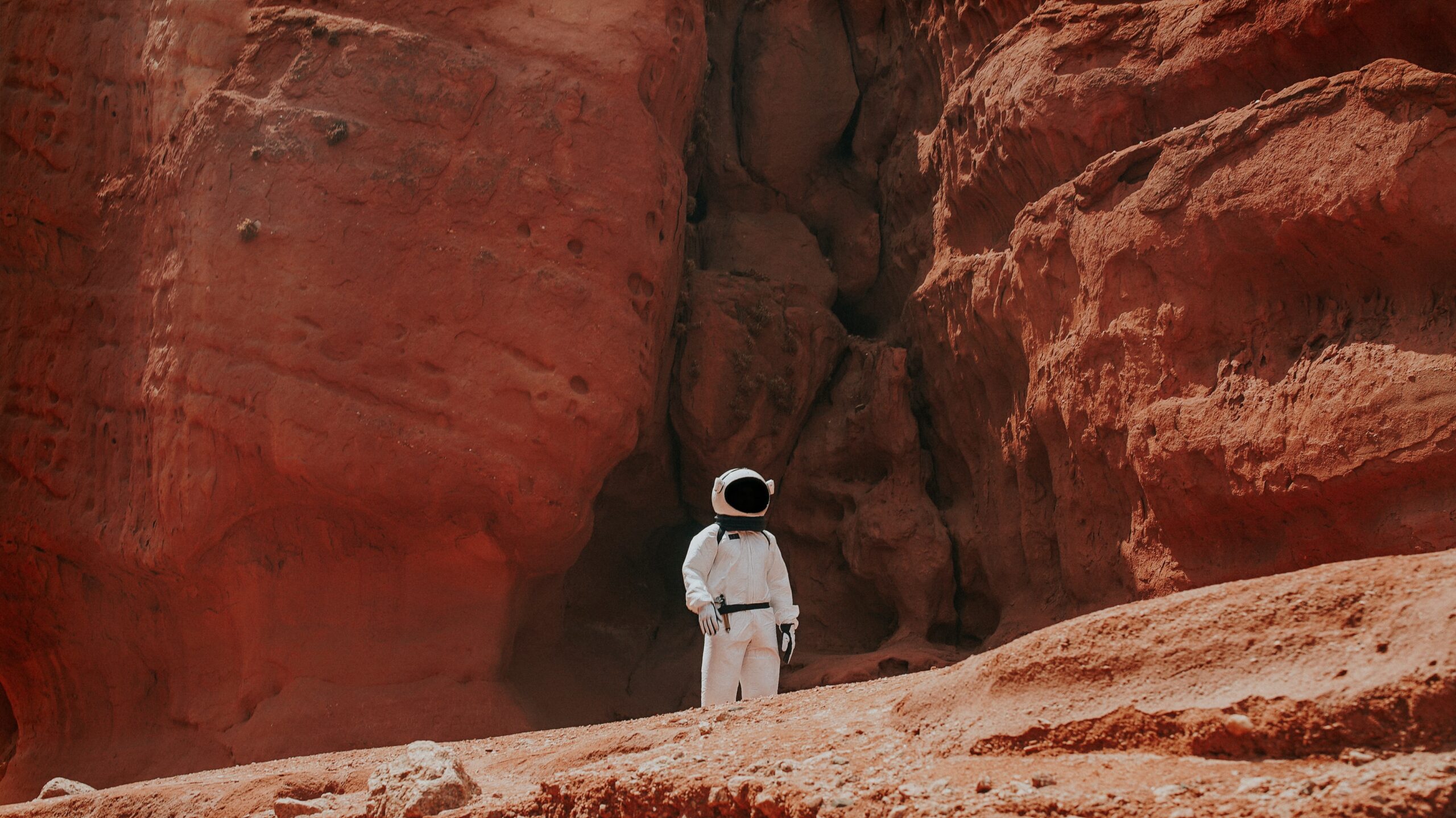
From Mars with an Apple
Last year, poco.lit. published some articles on Afrofuturism, Africanfuturism, and speculative fiction. This year, we’re pleased to publish some short pieces of creative writing that speculate on alternative futures on and of the African continent.
She took a bite off her apple that she had brought with her from Mars. The apple looked from a distance rather large and juicy compared to the ones in grocery stores. This was one of the many food products that flourished well in Mars’ soils, and was enrichened by the fresh water she discovered there and made accessible to the Martians – the natives of Mars – as well as the human inhabitants from Earth who had been relocating to Mars over the last ten years. All eyes were turned to Prof. Nina Mbote and her team of space scientists during their yearly visits to Earth. She explained at press conferences about life on Mars, the harmonious coexistence of humans and Martians. She told of how Mars was becoming a home away from home for humans. The highlight of her public appearance would always be when she read out the names of the hundred humans who had won the lottery to travel to Mars, and would go back with the space team on their return space flight back to Mars.
Prof. Nina Mbote, a geophysicist, who grew up in a small town in Chad, discovered water in the Sahara Desert while conducting geophysical explorations inside the Earth’s crust. The image of the Sahara had changed ever since, as it had become the greenest part of the Earth as the equatorial rain forest expanded, engulfing a landscape that was once as dry as the bones scattered on the desert sands. She later joined the Sub-Saharan Space Society (SSSS) in their space mission to Mars, where she employed the geophysical findings from her Sahara exploration in detecting and excavating fresh water in liquid form from the crust of Mars, fulfilling a fundamental requirement to support human inhabitancy on the planet. Advanced agricultural technology had enabled huge crop plantations on Mars, which produced healthy and bountiful harvests from Mars’ unpolluted soils and climate.
The Sub-Saharan Space Society had its hub in the Kalahari, and pioneered in the commercial space transportation of humans and Martians between the two planets. Their modern space infrastructure manifested in the sophisticated space planes painted in colourful African print and patterns, which had become the symbol connecting the two planets. Space tourism had gathered much demand, which saw daily flights to the ISS, weekly space flights to the moon and fortnightly flights through space to Mars: all of these, blasting off from the SSSS-Hub in the Kalahari. Space scientists from the University of Kalahari had further developed nuclear fission, facilitating efficient and adequate propulsion of the space plane during the long journey through space.
It was dusk as the hundred winners of the lottery to Mars from all corners of the Earth boarded the space shuttle “Afromars AM 735” from the Kalahari Space Hub. Prof. Nina Mbote and her Martian family were the last to board as they waved backed to spectators on the viewing platform. Despite being the laureate of many different prizes and honours, she was for many the figure of interplanetary co-operations: her family was made up of interplanetary species, who were well adapted for living conditions both on Earth and on Mars. The milestones of space exploration were not only present in her geophysical findings, but also incorporated in the bodies of her children, the new hybrid species tightening the ties between humans and Martians.

